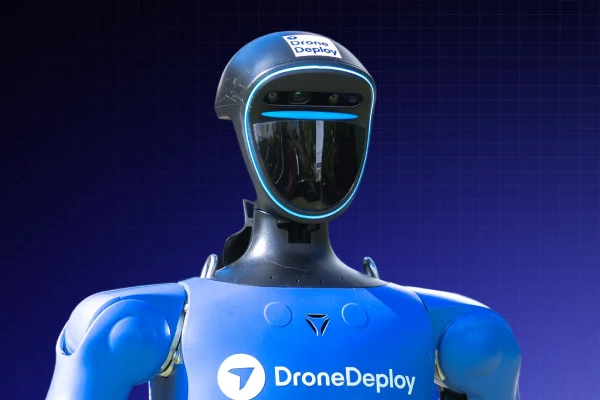How CSIRO Monitors and Surveys the Largest Wetlands in the World

Quick Summary
Australia is about 7.69 million square kilometers and is home to some of the world’s largest intact ecosystems. Many of these areas and the animals that inhabit them are increasingly threatened by climate change, natural disasters, invasive species, and habitat loss. The Commonwealth Scientific and Industrial Research Organisation (CSIRO), Australia’s national science research agency, seeks to combat these issues in partnership with Indigenous groups using technology innovations. Justin Perry, a CSIRO Research Scientist, studies the area’s natural ecology and threats to biodiversity. Seeing a need for a complementary program that would help support land managers, Justin turned to drone technology.
CSIRO partners with park managers, the University of Western Australia, Charles Darwin University, Microsoft, and Traditional Owners of the World Heritage-listed Kakadu National Park. Encompassing more than 13 million hectares, Kakadu is one of the world’s largest National Parks and is jointly managed by Traditional Owners and the Australian Government. The project team worked together to explore new strategies for weed and wildlife management to match what rangers were already doing without disrupting their organic workflow. In this case, an aggressive ponded pasture weed had invaded the globally significant wetlands of Kakadu, and Traditional Owners identified the management of this weed as high-priority.

Magpie geese in flight.
Challenges in Conservation Management
Apparent immediately were the challenges of access, implementation, and cost. The vast wetlands are difficult to access and are home to dangerous pigs, buffalo, and crocodiles. Understandably, as Justin told us, people were reluctant to “risk their lives to do these surveys.” Access to the survey areas was difficult, and, as such, much of the previous work had relied on the use of helicopters, which is prohibitively expensive for long-term weed management projects. Investing in drones was the logical next step to reduce costs and empower local people to undertake the work more frequently. Since work of this magnitude can only be conducted during the dry season, time is always of the essence.

Workers collecting water samples.
The Introduction of Drones
CSIRO’s northern Australian biodiversity team began using drones about 10 years ago to explore the potential of quantifying vegetation structure at fauna survey sites. At the time, drones were still in the early stages of commercial development, and the research team built their own to test the technology. Although the results were promising, there were many challenges in collecting the data and undertaking the post-processing steps to make it useful. However, CSIRO revisited the idea 4-5 years later, as off-the-shelf systems became more stable, user friendly, and economically viable. After checking out some other drone software solutions, the research team began using DroneDeploy for its easy accessibility and quick project sharing capabilities. Beginning with pre-programmed flights for automatic capture, they soon achieved what they were looking for: consistent results.

A worker removes wetland weeds.
Today’s Results
Today, drone data is used for a variety of projects, most notably in Kakadu National Park. Drone data has proved invaluable to these operations by providing timely feedback to land managers, Traditional Owners, and administrative officers about the effectiveness of management actions for supporting cultural and biodiversity values - something that was virtually impossible to achieve using manual survey. On Cape York Peninsula in Northern Queensland, drone data is being used to monitor cattle effects and introduced pigs on the wetlands. CSIRO is working with its partners to develop an AI-driven approach to automate the analysis of the aerial photographs that are used to count important animals and track the changes in habitat following management. This further simplifies the data collection and recording process for rangers who can use the summary data to assess the effectiveness of their chosen management actions and make informed planning decisions.
By working with land managers to combine accessible drone software with cloud-driven analytical approaches, the work has provided some useful examples of how drones can be used to support land management activities. For example, the Kakadu wetland management project is run by rangers who survey each site in about 2 hours. Following the survey, they use software to upload their map into cloud servers where automated functions perform the analysis and provide a web-based summary. Without this system in place, Justin explained, monitoring activities would need to be done by specialists, and data insights would only be available following manual analysis and reporting that generally takes between 6 – 12 months. Not only is this expensive, but the insights are not available when land managers need them to make decisions about their activities. More importantly, this approach provides Indigenous employment opportunities and embeds local people’s values and participation into the solution.
Currently, CSIRO is working with its partners to develop a universal data collection process, beginning in Kakadu but with international land management applications. This solution is open source and has been made available on Github. Creating practical, research-based solutions for Australia’s most pressing threats will continue to be at the forefront of CSIRO’s mission.
If you’re interested in learning more, explore our Drones for Good Program, or check out some of our other customer success stories. For a general overview, download our State of the Drone Market 2020 Report.
FAQ
Related articles
Ready to manage your data from the very start?
Book a quick call to see how DroneDeploy streamlines capture from construction through building ROI.
.svg)
.png)


